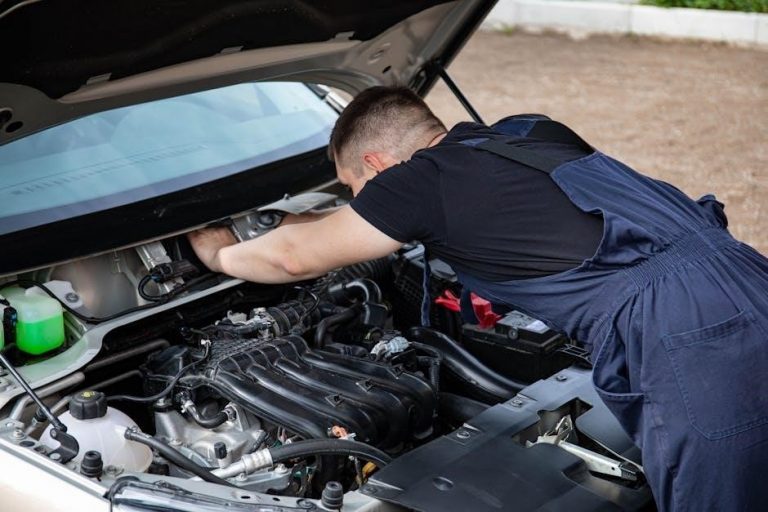Honeywell TH5220D1003 Manual: A Comprehensive Guide
Welcome! This guide provides detailed information about the Honeywell TH5220D1003 thermostat․ It offers operating, installation, and troubleshooting tips․ Recycle and dispose of properly, following local guidelines found in the provided instructions․
The Honeywell TH5220D1003 is a reliable, non-programmable thermostat designed for simple and effective climate control․ This user guide offers comprehensive instructions for its operation, installation, and basic troubleshooting․ The TH5220D1003 is a 2F/2C (2-stage Fahrenheit/2-stage Celsius) digital thermostat suitable for 24V systems with auto changeover capabilities between heating and cooling modes․
This manual helps users understand its key features and functionalities․ Whether you’re a homeowner setting it up or need assistance with basic functions, this guide provides clear directions․ The FocusPRO 5000 series is known for its ease of use and intuitive design․ It ensures comfortable temperature management․ It also includes information on where to find additional support online and recycling instructions for proper disposal․
Understanding the TH5220D1003 Model
The Honeywell TH5220D1003 is a FocusPRO 5000 series thermostat, designed as a low-voltage, non-programmable unit․ This model is known for its straightforward operation, offering a simple interface for users who prefer manual control over their home’s temperature settings․ It is compatible with a range of heating and cooling systems, offering broad applicability in various residential settings․
This thermostat features an auto changeover function, allowing it to automatically switch between heating and cooling modes․ It is capable of managing 2-stage heating and 2-stage cooling systems․ Its digital display provides clear temperature readings․ The TH5220D1003 is an excellent choice for those seeking basic, reliable temperature regulation without complex programming needs․ Refer to this manual for comprehensive setup and usage instructions․

Installation Instructions
Proper installation is crucial for optimal performance․ Follow the wiring guide for gas unit heaters and furnaces․ Mount the thermostat securely․ Utilize the cover plate if needed․ These steps ensure correct setup․

Wiring Guide for the TH5220D1003
The Honeywell TH5220D1003 thermostat requires careful wiring for proper functionality․ This guide specifically addresses wiring configurations for gas unit heaters (HD/HDB, HDS/HDC, PTS/BTS, PTC, PDP/BDP) and duct furnaces (D, H, I, & O series)․ Incorrect wiring can lead to operational issues or damage to the system․ Ensure the power is disconnected before commencing any wiring work․
Refer to the detailed diagrams provided in the complete installation manual, usually available online or included with the product․ Match the existing wiring from your old thermostat, if applicable, noting the terminal designations․ Common terminals include R, W, Y, G, and C, representing power, heating, cooling, fan, and common wires, respectively․

If unsure about any aspect of the wiring, consult a qualified HVAC technician․ Always double-check connections before restoring power․ Remember to ground the thermostat as per local electrical codes․ This ensures safety and accurate temperature readings․ This wiring guide will provide a safe and accurate install․

Mounting the Thermostat
Proper mounting of the Honeywell TH5220D1003 thermostat is crucial for accurate temperature sensing and optimal performance․ Select a location on an interior wall, away from direct sunlight, drafts, and heat sources․ Avoid mounting it behind doors or in areas with poor air circulation․ The ideal height is approximately five feet above the floor․
Before mounting, ensure the wall surface is clean and free from debris․ Use the included mounting screws and anchors to securely attach the thermostat base to the wall․ Level the base for a professional appearance․ Connect the pre-wired thermostat wires to the corresponding terminals on the base plate, following the wiring diagram․
Once the wiring is complete and secure, carefully align the thermostat body with the base and snap it into place․ Ensure it is firmly attached and does not wobble․ A properly mounted thermostat will provide accurate temperature readings and contribute to energy efficiency․ This mounting method ensures long-term reliability and performance, making your home more comfortable․
Cover Plate Usage (50002883-001)
The Honeywell 50002883-001 cover plate is designed to conceal any marks or holes left behind by a previously installed thermostat․ This accessory provides a clean, professional finish to your wall after upgrading to the TH5220D1003 model․ It is especially useful when the new thermostat is smaller than the old one, leaving unsightly blemishes․
To use the cover plate, first, ensure the wall surface is clean and smooth․ Align the cover plate over the existing marks, centering it for the best aesthetic appeal․ Use the provided screws to securely attach the cover plate to the wall․ Ensure the screws are tightened adequately to prevent any movement, but avoid over-tightening, which could damage the wall․
Once the cover plate is installed, you can proceed with mounting the TH5220D1003 thermostat over it․ The cover plate provides a flat, even surface for the new thermostat, ensuring proper adhesion and a seamless look․ This simple addition significantly enhances the overall appearance of your thermostat installation, giving it a polished and professional finish․

Operating the Thermostat
This section details the thermostat’s basic functions and settings․ Learn how to switch between heating and cooling modes․ Understand the non-programmable features․ Explore manual and auto changeover options for optimal comfort․
Basic Operation and Settings
The Honeywell TH5220D1003 is a user-friendly thermostat designed for simple operation․ Its primary function is maintaining a consistent temperature in your home․ This section explains basic operations to help you effectively control your home environment․ The thermostat features intuitive controls for adjusting temperature settings․ Use the up and down arrows to set your desired temperature․ The current room temperature is displayed prominently on the screen․ You can easily view and modify the setpoint․
The TH5220D1003 offers both Fahrenheit and Celsius temperature display options․ You may consult the user guide online for help with setting up your preferred temperature scale․ The thermostat’s display is clear and easy to read․ The thermostat is battery powered․ Alerts indicate when to replace the battery, ensuring continuous and reliable operation․ For detailed instructions, refer to the full manual available for download․
Switching Between Heat and Cool Modes (Manual/Auto Changeover)
The Honeywell TH5220D1003 thermostat offers flexibility in managing your home’s temperature by allowing you to switch between heating and cooling modes; This can be done manually or automatically, depending on your preference․ The manual changeover option requires you to select either heat or cool mode based on the season․ To manually switch modes, locate the system switch on the thermostat․ Move the switch to either the “Heat” or “Cool” position․
Some models offer auto changeover, which allows the thermostat to automatically switch between heating and cooling․ Auto changeover is based on your set temperatures for both modes․ To enable auto changeover, adjust the installer setup function 12․ You can configure the system settings for automatic operation․ See the Honeywell instructions that shipped with your thermostat for additional setting options․ For detailed instructions, consult the manual․
Non-Programmable Features
The Honeywell TH5220D1003 is a non-programmable thermostat, which means it doesn’t allow you to set up a schedule for temperature changes throughout the day․ Instead, it focuses on simplicity and ease of use by maintaining a constant set temperature․ This thermostat is designed for users who prefer manual control and consistent comfort without the need for complex programming․
Despite being non-programmable, the TH5220D1003 includes several useful features․ It offers precise temperature control, ensuring your home stays at your desired comfort level․ The thermostat also displays the current room temperature, allowing you to monitor your environment․ The manual mode provides straightforward operation․ The absence of programming simplifies operation, making it user-friendly․ Its basic operation and settings are straightforward․

Troubleshooting and FAQs
This section addresses common issues with the Honeywell TH5220D1003․ Learn how to reset your thermostat․ Find answers to frequently asked questions․ Get installer setup information, including system setting (Function 12) adjustments for manual or auto changeover․
Resetting the Honeywell TH5220D1003
If your Honeywell TH5220D1003 thermostat is malfunctioning, resetting it might resolve the issue․ A reset can help with unresponsive buttons or incorrect temperature readings․ There are different types of resets, including a power cycle and a factory reset․
To perform a power cycle, turn off the power to the thermostat at the circuit breaker for a few minutes, then turn it back on․ For a factory reset, consult the user manual, which can be accessed online for detailed instructions, as resetting methods can vary․
Keep in mind that a factory reset will erase any custom settings, returning the thermostat to its original default configuration․ After a reset, you may need to reconfigure settings such as the date, time, and temperature preferences․ If problems persist after attempting these resets, further troubleshooting or professional assistance might be required․ Remember to read and save these instructions․
Installer Setup (Function 12: System Setting)
The Honeywell TH5220D1003 thermostat includes installer setup options, which are essential for configuring the thermostat to match your specific heating and cooling system․ Function 12, also known as the System Setting, allows you to define how the thermostat operates with your HVAC equipment․ This setting is crucial for ensuring compatibility and optimal performance․
You can configure Function 12 to either “Manual” or “Auto Changeover․” Manual changeover requires you to switch between heating and cooling modes manually․ Auto Changeover, on the other hand, automatically switches between heating and cooling based on the set temperatures․
Refer to page 11 of the user guide for detailed instructions on accessing and adjusting this setting․ Incorrect configuration of Function 12 can lead to inefficient operation or system damage․ Always consult the Honeywell instructions provided with the thermostat for detailed steps․ Make sure to read and save these instructions․

Additional Resources
Explore further assistance with recycling and disposal information, warranty details, and online user guide access․ Visit yourhome․honeywell․com for help․ These resources provide comprehensive support beyond the manual․
Recycling and Disposal Information
When it’s time to retire your Honeywell TH5220D1003 thermostat, proper recycling and disposal are essential․ This helps protect the environment and prevents potential harm from hazardous materials․ Consult your local waste management authority for specific instructions on recycling electronic components and batteries․ Many communities offer designated collection programs or recycling centers for electronic waste․
Before disposal, remove any batteries from the thermostat․ Check local regulations for battery disposal, as they often require separate handling․ Some retailers also offer battery recycling programs․ Do not dispose of the thermostat or batteries in regular household waste․ This ensures that valuable materials can be recovered and harmful substances are managed safely․
Following these guidelines for recycling and disposal demonstrates environmental responsibility․ For more detailed information, refer to the instructions shipped with your Honeywell TH5220D1003 or visit your local government’s website․ Remember, responsible disposal protects our planet and promotes a sustainable future․

Warranty Information
Honeywell warrants the TH5220D1003 thermostat, excluding the battery, to be free from defects in workmanship or materials, under normal use and service, for a specified period from the date of original purchase․ The specific duration of the warranty may vary, so refer to the documentation included with your thermostat or the Honeywell website for details․
This warranty covers the cost of replacement or repair of the defective product․ The warranty does not cover damage resulting from improper installation, misuse, abuse, accident, alteration, or repairs not authorized by Honeywell․ To obtain warranty service, contact Honeywell customer support or an authorized service provider․ You may be required to provide proof of purchase and a description of the defect․
Honeywell’s liability is limited to the purchase price of the thermostat․ This warranty is in lieu of all other express or implied warranties, including merchantability and fitness for a particular purpose․ Some jurisdictions may not allow limitations on implied warranties, so the above limitation may not apply to you․

Accessing the User Guide Online
The complete user guide for the Honeywell TH5220D1003 thermostat can be easily accessed online, providing a convenient way to find detailed information about your device․ To access the user guide, visit the official Honeywell Home website and navigate to the support section․ You can typically find the user guide by searching for your specific thermostat model number, TH5220D1003․
The online user guide offers comprehensive instructions on operating the thermostat, troubleshooting common issues, and understanding advanced features․ It often includes diagrams, FAQs, and other helpful resources to assist you in maximizing the performance of your TH5220D1003․ The online format also allows for easy searching, making it simple to find specific information quickly․
Additionally, the Honeywell Home website may provide access to other helpful resources, such as video tutorials and community forums, where you can find answers to frequently asked questions and connect with other users․ Remember to save the link to the user guide for future reference․




